



Philippines Trade Update: Exports momentum continues
 DOWNLOAD
DOWNLOAD

Quarterly Economic Growth Release: More BSP cuts to come
 DOWNLOAD
DOWNLOAD

Monthly Economic Update: Fed catches up
 DOWNLOAD
DOWNLOAD


Credit growth seen to slow

Lending growth will likely slow to single-digit levels this year after the double-digit expansion seen in 2022 due to the central bank’s tightening, the Bank of the Philippine Islands (BPI) said.
BPI Vice-President Marco M. Javier said in an online briefing on Friday that credit growth could ease to low single-digit levels this year.
“We’re looking at low single digits for credit growth and for NPLs (nonperforming loans), probably near 3-4%,” Mr. Javier said. “The lagged effects of the monetary tightening will probably be creeping in the latter part of the year.”
“(NPLs) should still be relatively lower than the peak that we saw during the height of the pandemic,” he added.
Outstanding loans by big banks grew by 9.7% to P10.86 trillion in April, slower than the 10.2% expansion in March and the 10.1% seen a year earlier, data from the Bangko Sentral ng Pilipinas (BSP) showed, which analysts said was due to the BSP’s rate hikes making their way through the financial system.
The BSP hiked borrowing costs by 425 basis points (bps) from May 2022 to March this year. The Monetary Board has since paused its policy tightening, keeping the key rate at 6.25%, as it expects inflation to continue easing.
Meanwhile, the banking industry’s gross bad loan ratio increased to 3.41% in April from 3.33% in March. Still, this was lower than the 3.93% a year earlier.
For his part, BPI Lead Economist Emilio S. Neri, Jr. said the BSP may cut policy rates in the next 12 to 18 months, especially if inflation eases sharply to 2-3% in early 2024.
However, Mr. Neri cautioned that if the reduction in policy rate is too aggressive, it could be unsustainable.
“We can aspire for a narrow interest rate differential between the Philippines and the US, but that will require several things. In the medium term, productivity and the current account deficit needs to be addressed,” Mr. Neri added.
“Foreign reserves are also falling behind our external debt… That will likely subject the Philippines to both current account and balance of payments deficits. If that’s the case, it’s very difficult to maintain a narrow differential between Philippine and US rates,” he said.
The US Federal Reserve’s target interest rate is currently at a range between 5% and 5.25%. — K.B. Ta-asan
This article originally appeared on bworldonline.com





 By BusinessWorld
By BusinessWorld